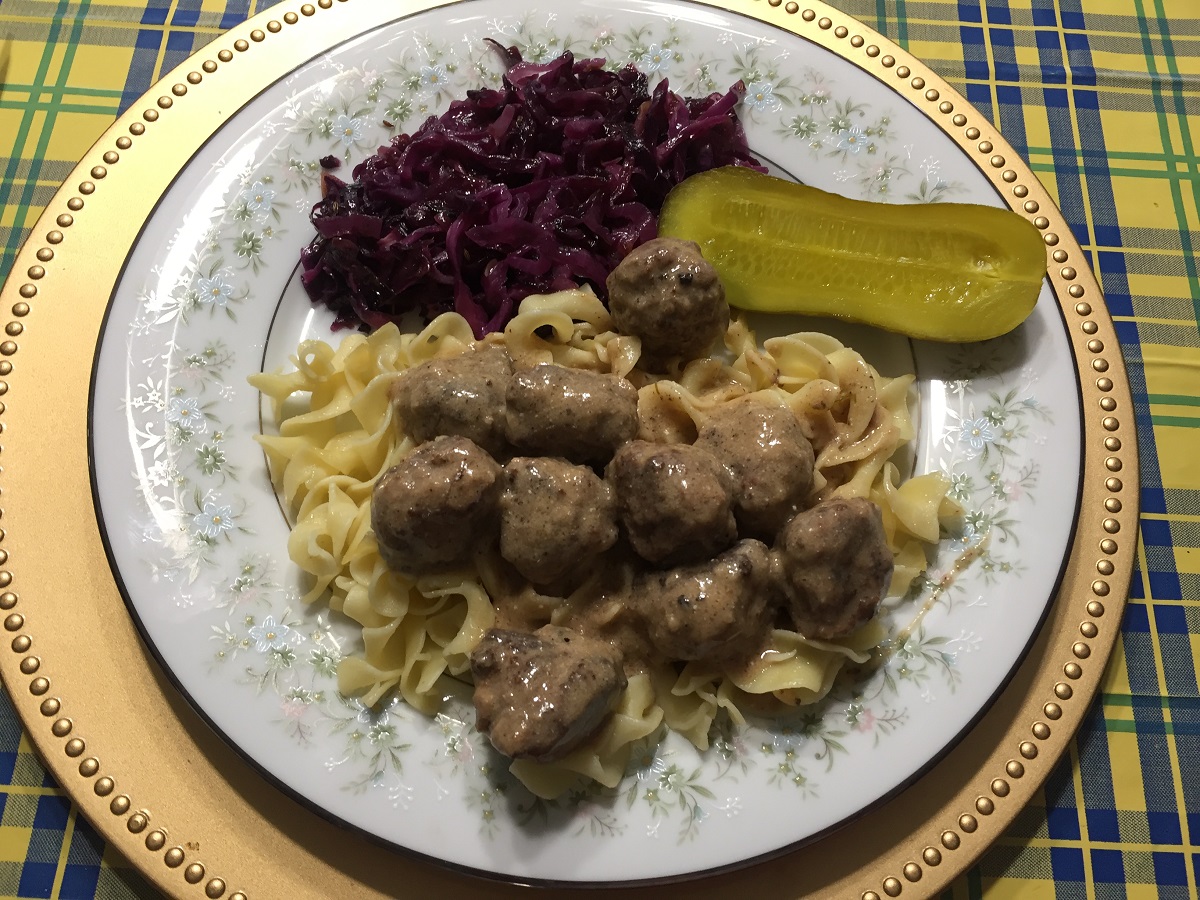
 |
FrikadellerDanish Meatballs |
|---|---|
|
A story we read in grammar school was about a little girl, her immigrant Swedish mother, Swedish meatballs and a pot luck dinner. The child brought home the written request from the school for the parents to provide a dish for the school’s pot luck dinner. The little girl’s friends at school told her of all the elegant and fancy foods that their parents were going to provide for the dinner. The little girl was distraught. Her mother told her she was going to make Swedish meatballs for the dinner. To the little girl this was a tragedy because she thought of the meatballs as a prosaic thing. She had them frequently and now her mother was going to present the common side of her life at home while everyone else was going to bring fancy food. The point of the story was that what we take for granted, in this case a hearty meal of Swedish meatballs, can be elegant and exotic and well received by every one else. This was the case in the story. Everyone loved and raved about the meatballs and the girl, in the end, was proud to take home the only clean pan. The pot luck participants had eaten to the very last meatball. The Swedish meatballs how won out over the fluff of fancy fare provided by the other children. Unless you are talking about Hans Christian Andersen, almost anyone who hears the name Andersen thinks it must be Swedish and almost instinctively changes the spelling to Anderson. I to this date don’t know why. It is just one of those things that you become inured to as a child, always having to spell your name, stressing the “e” so others would know who you really were. After all, the Danes have Hans Christian and the little mermaid on the rock in Copenhagen harbor. What do the Swedes have? They have Swedish meatballs. Well then, I wanted Danish meatballs! The running joke that 1950's summer at Aunt Margie’s house was that henceforth all references to Swedish meatballs would be changed. I had my Danish meatballs at last. It was only some years later that I learned that there really was a dish called Danish meatballs. It was called Frikadeller. Taking into consideration variations in a given recipe, as far as I can tell Danish and Swedish meatballs are one in the same. So, in the end, I guess what we really have are Scandinavian meatballs instead. Nonetheless, I still love my Frikadeller. Aunt Margie had a collection of cast iron cookware. You know the kind. They were bumpy and grainy on the outside but inside they were seasoned with mirror smooth, glossy black coatings. It took years of tender care to build up those almost Teflon-like surfaces. One of those large, weight-lifter heavy pans was perfect for Danish meatballs. Aunt Margie added a spoonful of bacon drippings from the little container of clarified drippings that was always on the stove. And, while she was frying the last batch of meatballs, she added a couple of spoonfuls of the meat mixture she held back. This would add to the brown bits in the pan for the gravy. When the last meatballs had been removed from the pan, she carefully poured off the fat leaving 2 tablespoons of drippings and the brown bits behind. She seasoned with 2 teaspoons of dill weed. As a kid, I was not all that enthused with the dill weed. I still like the meatballs but liked less dill. Today I add 1 teaspoon of dill but the Frikadeller are great without any dill at all. |
| Preparation: 1 hour 30 minutes | Life Experience Recipe |
| Makes 4 main or 6 side dishes | Margie A. Gilliland |
| Meatball Ingredients: | |
|
|
| Gravy Ingredients: | |
|
|
Procedure
I personally like the meatballs and this light colored gravy served over wide egg noodles. The meatballs do, however, go equally well with boiled new potatoes, mashed potatoes or rice. The meatballs freeze well and are still just as good after reheating. It is a national dish in Denmark, served with potatoes, preserved sour vegetables and thick brown sauce. It has been popular in Denmark for a very long time. An old cookbook from 1648 describes a frikadeller dish. The Danes eat the meal all year round as a traditional main dish, in fact one might have reason to say frikadeller is the Danes favorite dish of all. |

|